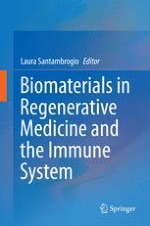2015 | OriginalPaper | Buchkapitel
12. Integrated Biomaterial Composites for Accelerated Wound Healing
verfasst von : Viness Pillay, Pradeep Kumar, Yahya E. Choonara
Erschienen in: Biomaterials in Regenerative Medicine and the Immune System
Aktivieren Sie unsere intelligente Suche, um passende Fachinhalte oder Patente zu finden.
Wählen Sie Textabschnitte aus um mit Künstlicher Intelligenz passenden Patente zu finden. powered by
Markieren Sie Textabschnitte, um KI-gestützt weitere passende Inhalte zu finden. powered by
